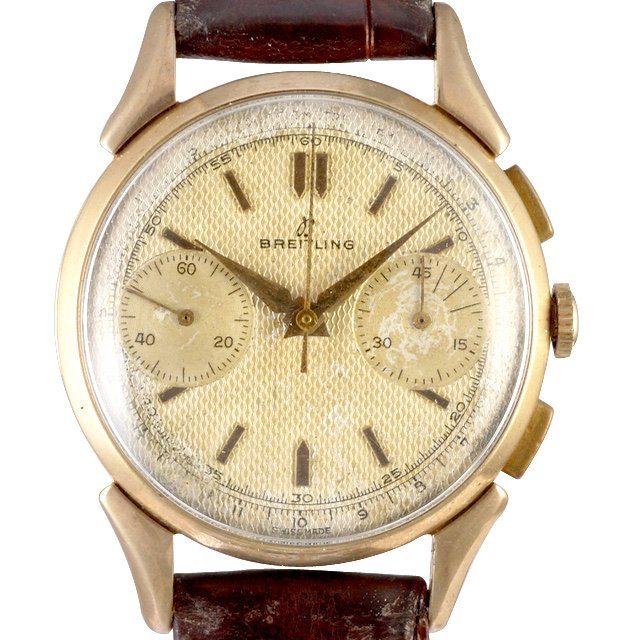
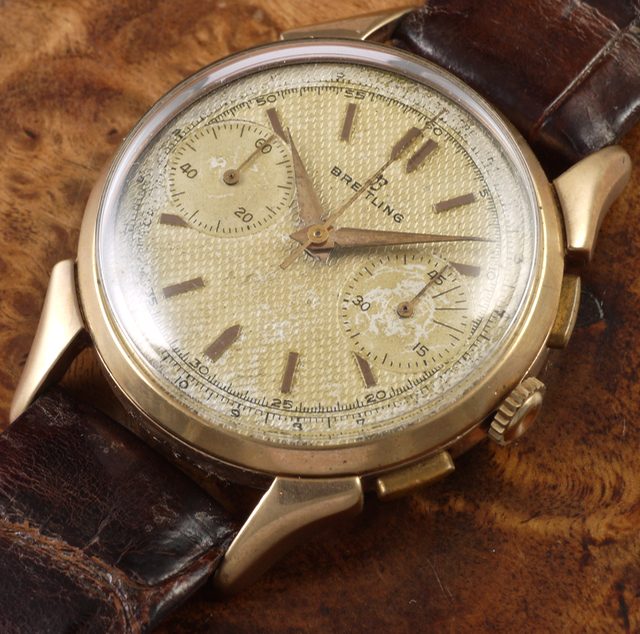
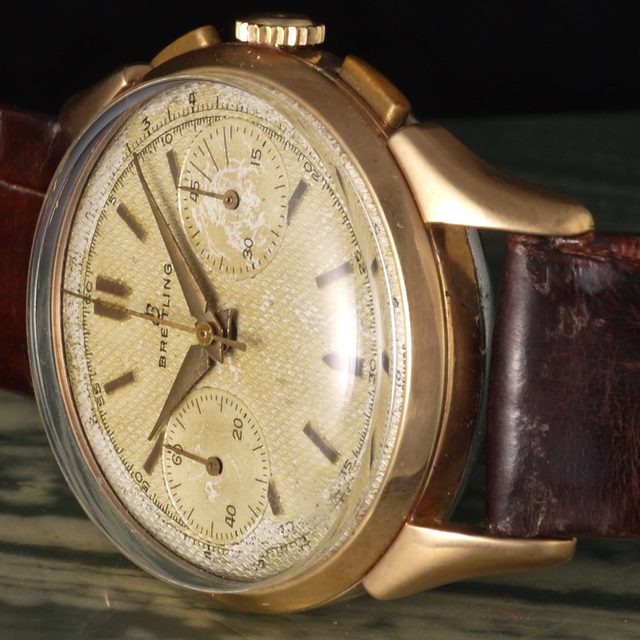
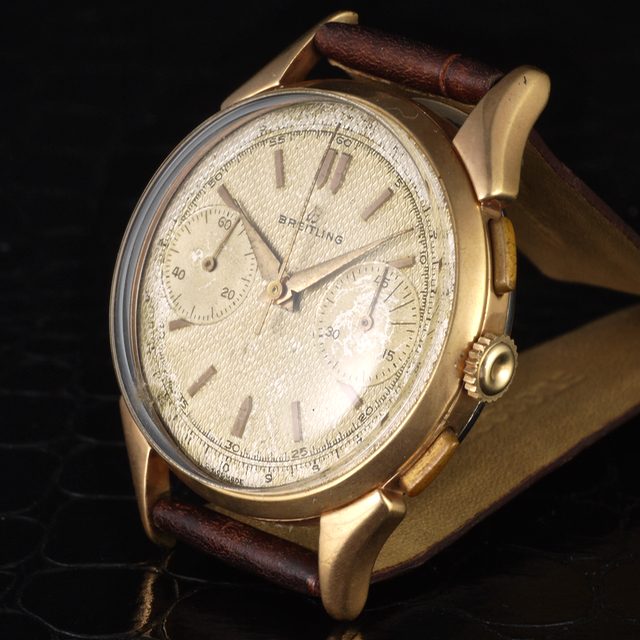
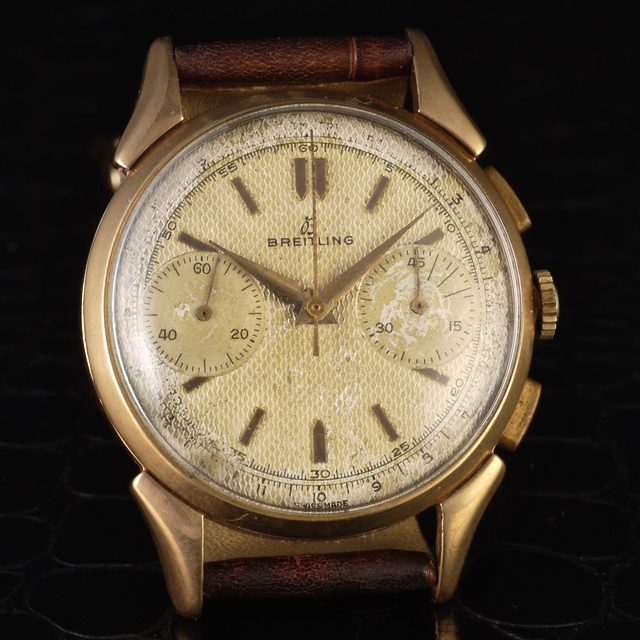
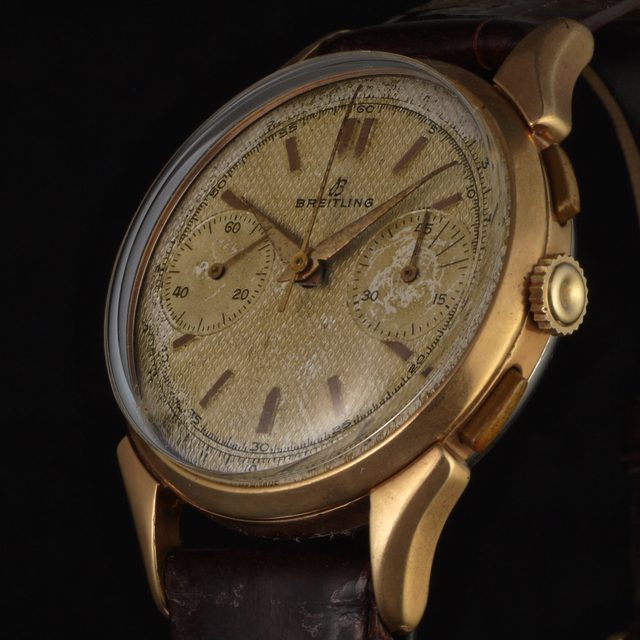
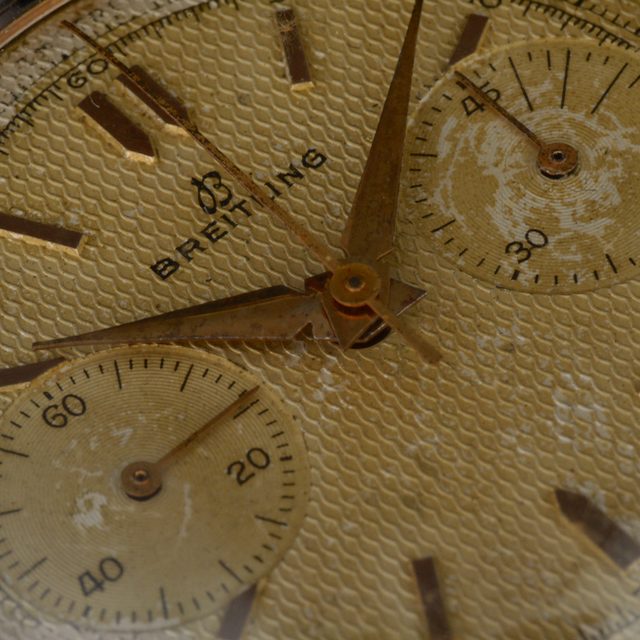
Breitling Chronograph
Watson, Crick, and Franklin discover DNA's structure1953 Breitling 1192 Chronograph, manual winding cal. Venus 188, honey comb dial with Telemetre. 33mm. gold plate case, stainless steel case-back.
A telemeter scale of the Breitling 1192 Chronograph measures the distance between the user of the watch and the event seen and heard. It was used extensively to calculate when artillery fired. When you saw the light of the shot of the artillery, you would push the start button and push the stop button when the thunder was heard. The number shown in the scale refers to the distance.
A Breitling 1192 Chronograph remains near the top of virtually every vintage watch collectors wish list.
Jerry Seinfeld, Graham Hill, Jim Clark, Miles Davis all wear (or wore) a vintage Breitling.
The Breitling chosen as the official timepiece of AOPA, Aircraft Owners and Pilots Association. Something which Breitling has traded on ever since.
A 24-hour dial version, the Cosmonaute, was also produced in the early 60s.
The first generation Navitimer 806 came in the early 50s, they had Arabic numerals, black dials and sub-dials.
The second generation shows silver sub-dials and index instead of numbers.
Many early Navitimers didn’t have the Breitling logo, but the AOPA wing on the dial.
Some rare dials show the AOPA wings and the letter B instead of the Breitling logo.
Breitling has been a leading innovator in high quality stopwatches and chronographs and helped define how chronographs look and function until today.
Breitling launched the first wrist chronograph with a pusher at 2:00 in 1915.
Presented in 1933 as the first dual pusher wrist chronograph with pushers at 2:00 and 4:00 o’clock.
Breitling was one of the first manufacturers to recognize the need of early aviators for wrist watches incorporating such devices.
In 1942 Breitling introduced the Chronomat, the worlds first Smart Watch, a chronograph with a rotating logarithmic slide rule that allowed complex calculations with the turn of your fingers.
Throughout the 1930s to 50s, Breitling continued creating chronographs with different scales to suit different professions, such as tachometers for production engineers and drivers, and pulsometersfor doctors.
